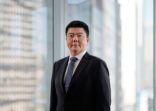The Philippines has two financial industry regulators, creating market inefficiency.
Collective investment schemes managed by banks are called unit investment trust funds (UITFs), which are regulated by the country’s central bank, the Bangko Sentral ng Pilipinas.
Mutual funds are managed by investment companies, which are regulated by the Securities and Exchange Commission (SEC).
Currently, only banks are allowed to launch feeder funds.
There are 107 UITFs in the Philippines with total AUM of around $15.88bn. Sixteen of those instruments are feeder funds with total assets of around $1.44bn as of end-February, according to data from Trust Officers Associations of the Philippines.
The SEC was expected to allow investment companies to launch feeder funds last year, but nothing has happened yet, Pama said.
She added that the regulator may be busy working on the collective investment schemes law (CISL). The law aims to align the regulations between mutual funds, UITFs and investment-linked insurance products.
According to Pama, regulators are still addressing the different tax issues under the CISL. One example is the documentary stamp taxes imposed on the shares of mutual funds, which are not present in UITFs.
The regulators are expected to have meetings regarding the CISL next week, Pama said, but did not give a timeline on when she expects the law to be enforced.
Seeking diversification
Although mutual funds in the country are not allowed to launch feeder funds, they could offer foreign exposure to investors by offering fund-of-funds, according to Pama.
For example, of the 11 products that her firm manages, three are fund-of-funds products.
Mutual funds in the Philippines, including fund-of-funds, could be distributed by a firm’s in-house agents or through partnerships made with private banking or wealth management arms of a bank, according to Pama. Examples of these banks that the firm has partnerships with are Citibank, HSBC and BDO Private Bank, the private banking arm of Banco De Oro, which is the country’s largest bank.
But retail banks can only distribute their own products, which are their UITFs and bancassurance products that are managed by an insurance firm partnered with the bank.
Pama expects more demand for fund-of-funds, especially since the regulators just relaxed regulations for Philippine nationals to easily convert more Philippine pesos to US dollars.
In addition, investors are looking for diversification. “There are only around 30 stocks here in the stock market. In other markets, that would be a concentrated stock portfolio – that’s our whole market,” she said.
The firm is currently thinking of other ideas to bring foreign exposure to investors, Pama said, adding that it is exploring high yield bond products at the moment.
Morningstar decides
Pama explained that a complex process exists for setting up funds.
Mutual funds in the Philippines are set up as investment companies, so firms have to set up the company first, which takes around three-to-six months. “And then the next phase is the registration of the securities, so it’s a really quite a long process when setting up a fund.”
Launching fund-of-funds is even more complex, as the SEC imposes strict requirements on the underlying securities of fund-of-funds products. For example, the SEC initially required fund of funds to only invest in foreign funds that have a five-star rating from Morningstar, according to Pama.
“It took some time for us to convince the regulators to relax the Morningstar rating a bit from five stars to four stars so that we would have a better investment universe,” she said.
The SEC is expected to release new amendments that would further relax the criteria that fund of funds would have to follow, Pama said. But no timeline has been given.
Fund industry growth
The mutual fund industry in the Philippines, which stands at around PHP257.6bn ($5.17bn), albeit small, continues to grow.
Sun Life Asset Management alone saw a 9% growth of its AUM during the first quarter this year from last year’s, according to Pama, adding that it was the first time for the firm to breach the PHP60bn AUM mark this month.
Around 9% oftotal AUM is from local institutional investors, while the remainder consists of individual investors, Pama said, noting that the majority would come from affluent investors.
















